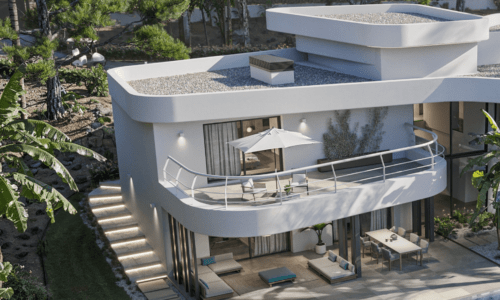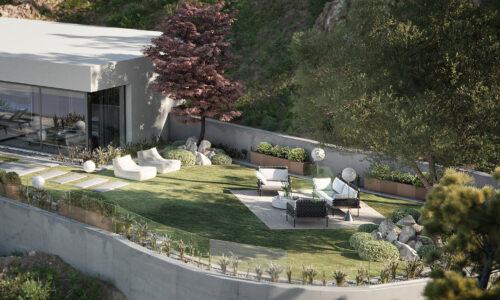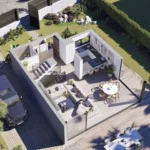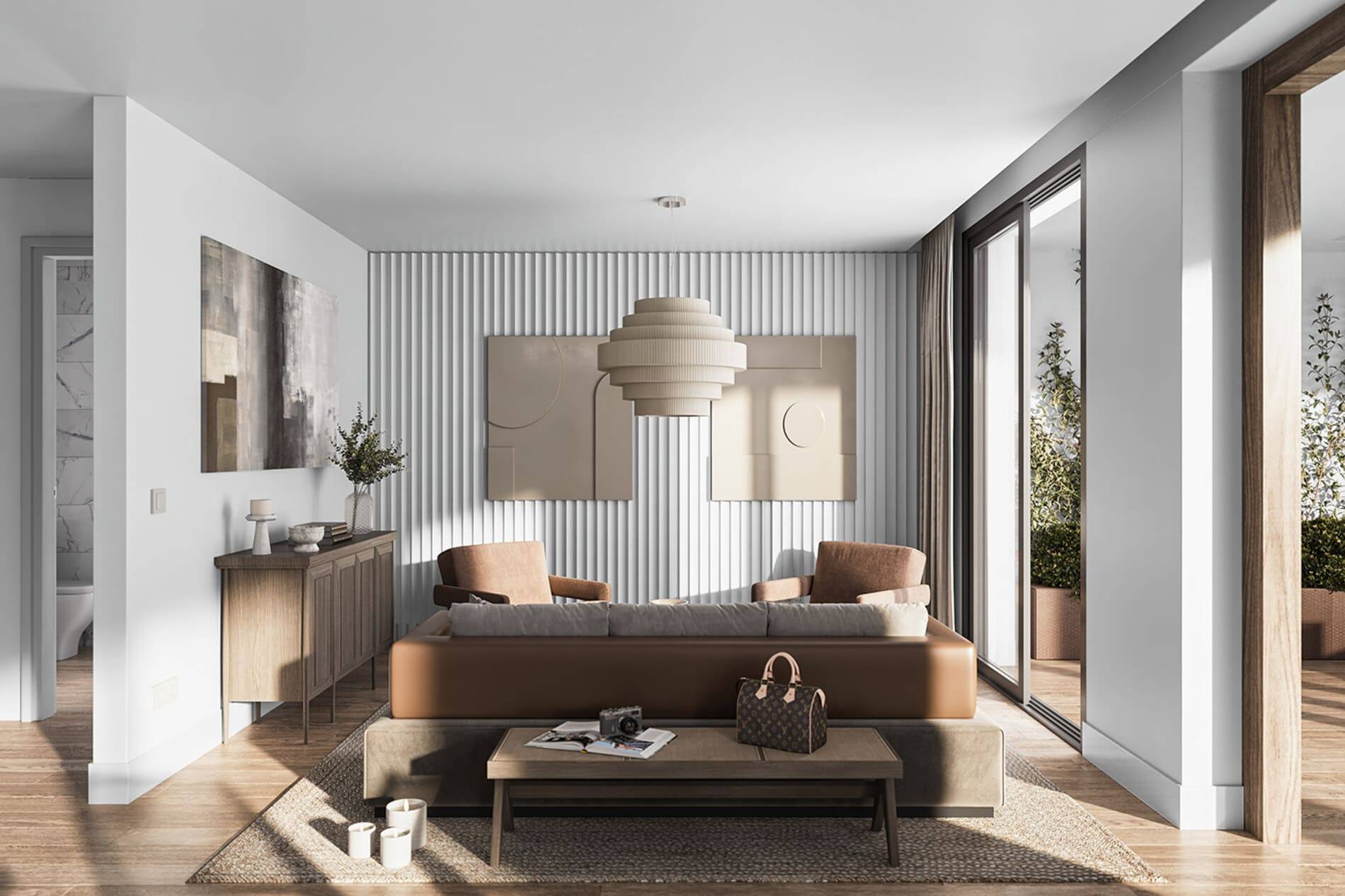
Lighting in Architectural Rendering
- Alejandro Postigo
- August 6, 2024
- Uncategorized
- 0 Comments
In the world of architectural visualisation, lighting plays a crucial role. It is not just a technical element but also an artistic one, capable of completely transforming the perception of a space. At Zenit Visuals, we explain why lighting is so essential in architectural rendering and how it can be used to create realistic and emotionally impactful images.
Read this article: PBR Materials in photorealistic renders
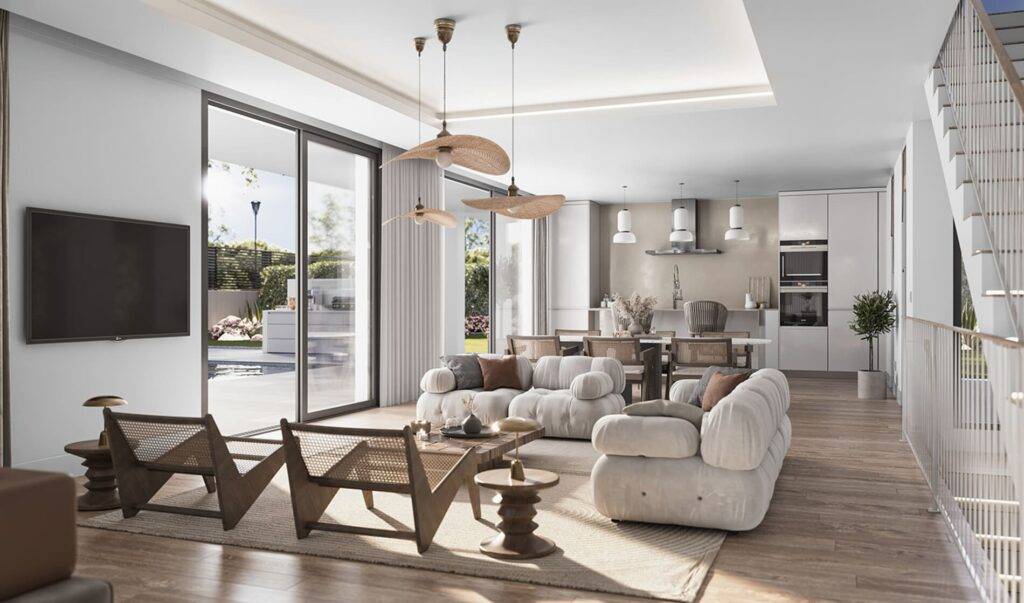
The Role of Lighting in 3D Rendering
Creating Realistic Environments: Lighting is fundamental to creating realistic environments in architectural renders. By simulating how light interacts with materials and surfaces, it is possible to achieve an accurate representation of how the space will look in real life. The correct use of natural and artificial light helps to highlight architectural details and give depth and dimension to the scenes.
Conveying Emotions: Lighting also has a significant impact on the atmosphere and emotion that an image conveys. For example, soft and warm light can create a sense of warmth and comfort, while cool and direct light can convey modernity and efficiency. Architectural renders that effectively employ lighting can evoke specific emotions, helping clients to connect emotionally with the design.
Highlighting Architectural Elements: Through lighting, certain architectural elements and design features can be highlighted. Shadows and contrasts can be used to draw attention to particular details, such as material textures, volumes, and shapes. This not only enhances the understanding of the design but also emphasises unique and differentiating aspects of the project.
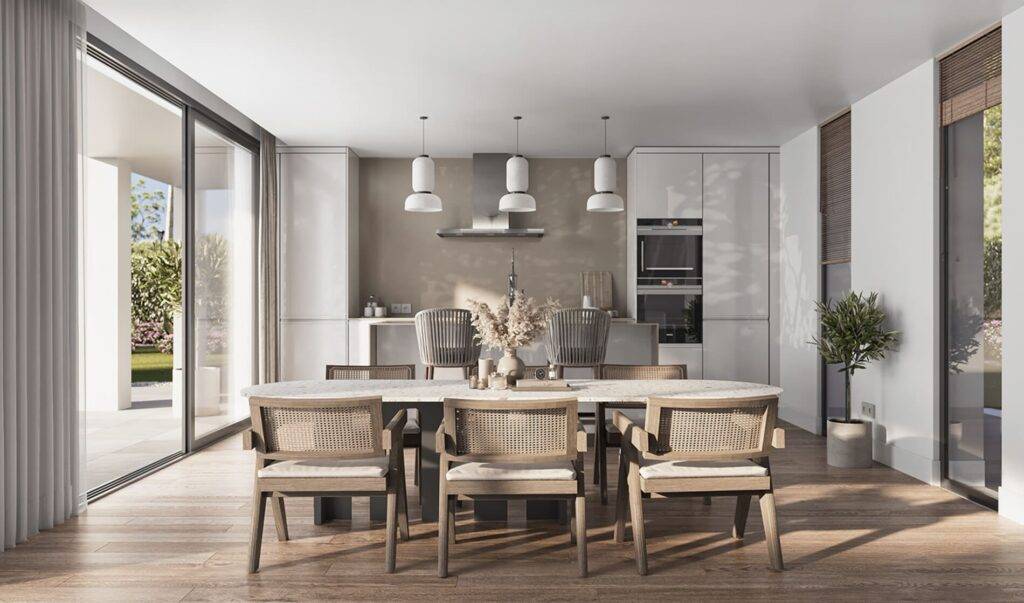
Lighting Techniques in Architectural Rendering
Global Illumination (GI)
Global Illumination is an advanced technique that simulates how light reflects and refracts on different surfaces, creating a more natural and realistic lighting. This technique considers both direct and indirect light, achieving a much more precise and detailed lighting effect.
High Dynamic Range Imaging (HDRI)
The use of HDRI allows capturing and utilising a wider range of light levels in a scene. HDRI maps are especially useful for creating realistic environments, as they provide detailed information about a scene’s lighting, including natural shadows and reflections.
Light Baking
Light baking is a technique where a scene’s lighting is calculated and “baked” into the textures of the objects. This allows for fast and efficient renders without sacrificing visual quality, making it ideal for interactive and real-time projects, such as virtual tours.
Lighting is an essential component in architectural rendering that not only affects the appearance and realism of images but also the way people perceive and feel in a space. By mastering lighting techniques, we can create impactful visualisations that capture the essence and vision of the architectural design. If you want to take your projects to the next level with high-quality 3D renders, do not hesitate to contact us to discover how our expertise in lighting can make your ideas shine.
If you need more information or would like to hire any of our architectural visualisation services, please do not hesitate to contact us.
